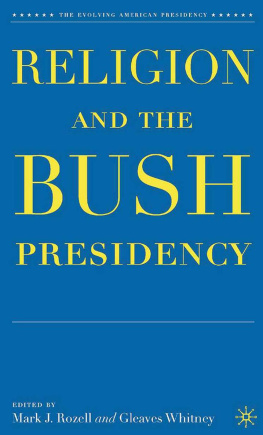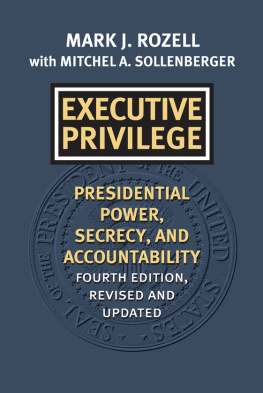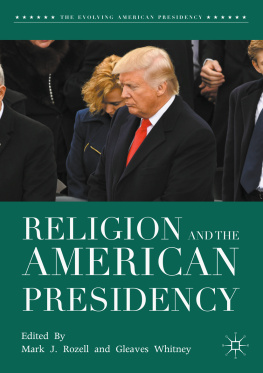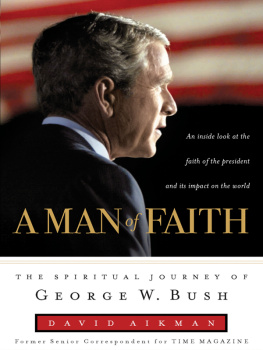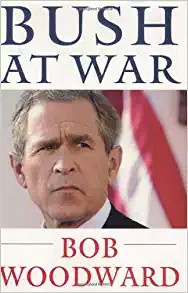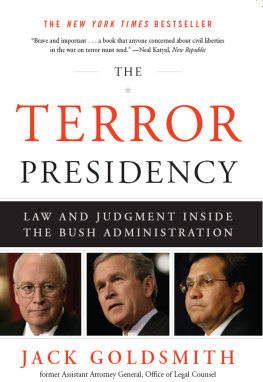Religion and the Bush Presidency
T HE E VOLVING A MERICAN P RESIDENCY S ERIES
Series Foreword :
The American Presidency touches virtually every aspect of American and world politics. And the presidency has become, for better or worse, the vital center of the American and global political systems. The Framers of the American government would be dismayed at such a result. As invented at the Philadelphia Constitutional Convention in 1787, the Presidency was to have been a part of a government with shared and overlapping powers, embedded within a separation-of-powers system. If there was a vital center, it was the Congress; the Presidency was to be a part, but by no means, the centerpiece of that system.
Over time, the Presidency has evolved and grown in power, expectations, responsibilities, and authority. Wars, crises, depressions, industrialization, all served to add to the power of the presidency. And as the United States grew into a world power, presidential power also grew. As the United States became the worlds leading superpower, the presidency rose in prominence and power, not only in the United States, but on the world stage.
It is the clash between the presidency as invented and the presidency as it has developed that inspired this series. And it is the importance and power of the modern American presidency that makes understanding the office so vital. Like it or not, the American Presidency stands at the vortex of power both within the United States and across the globe.
This Palgrave series, recognizing that the Presidency is and has been an evolving institution, going from the original constitutional design as a Chief Clerk, to today where the president is the center of the American political constellation. This has caused several key dilemmas in our political system, not the least of which is that presidents face high expectations with limited constitutional resources. This causes presidents to find extra-constitutional means of governing. Thus, presidents must find ways to bridge the expectations/power gap while operating within the confines of a separation-of-powers system designed to limit presidential authority. How presidents resolve these challenges and paradoxes is the central issue in modern governance. It is also the central theme of this book series.
Michael A. Genovese Loyola Chair of Leadership Loyola Marymount University Palgraves The Evolving American Presidency , Series Editor
The Second Term of George W. Bush
edited by Robert Maranto, Douglas M. Brattebo, and Tom Lansford
The Presidency and the Challenge of Democracy
edited by Michael A. Genovese and Lori Cox Han
Religion and the American Presidency
edited by Mark J. Rozell and Gleaves Whitney
Religion and the Bush Presidency
edited by Mark J. Rozell and Gleaves Whitney
Religion and the Bush Presidency
Edited by Mark J. Rozell and Gleaves Whitney
RELIGION AND THE BUSH PRESIDENCY Mark J. Rozell and Gleaves Whitney, 2007.
All rights reserved. No part of this book may be used or reproduced in any manner whatsoever without written permission except in the case of brief quotations embodied in critical articles or reviews.
First published in 2007 by
PALGRAVE MACMILLAN
175 Fifth Avenue, New York, N.Y. 10010 and
Houndmills, Basingstoke, Hampshire, England RG21 6XS
Companies and representatives throughout the world.
PALGRAVE MACMILLAN is the global academic imprint of the Palgrave Macmillan division of St. Martins Press, LLC and of Palgrave Macmillan Ltd. Macmillan is a registered trademark in the United States, United Kingdom and other countries. Palgrave is a registered trademark in the European Union and other countries.
ISBN-13: 9781403980076
ISBN-10: 1403980071
Library of Congress Cataloging-in-Publication Data
Religion and the Bush presidency / edited by Mark J. Rozell and Gleaves
Whitney.
p. cm.(Evolving American presidency series)
Includes bibliographical references.
ISBN 1403980071 (alk. paper)
1. Bush, George W. (George Walker), 1946Religion. 2. Bush,
George W. (George Walker), 1946Political and social views. 3. United StatesPolitics and government2001 4. Religion and politics United States. I. Rozell, Mark J. II.Whitney, Gleaves.
E903.3.R45 2007
973.931092dc22 2006036621
A catalogue record for this book is available from the British Library. Design by Newgen Imaging Systems (P) Ltd., Chennai, India.
First edition: September 2007
10987654321
Printed in the United States of America.
Contents
Illustrations viiIntroduction: Religion and the Bush Presidency 1 Mark J. Rozell
1 Bush and the Christian Right: The Triumph
of Pragmatism 11 Mark J. Rozell
Part I Religion and the 2004 Election
2 What Does the Lord Require? Evangelicals
and the 2004 Presidential Vote 31 Corwin Smidt, John C. Green, Lyman Kellstedt,
and James Guth
3 Catholics and the Politics of Change: The
Presidential Campaigns of Two JFKs 51 John Kenneth White and William DAntonio
4 The Mainline Protestant Vote 69 Laura R. Olson and Adam L. Warber
5 The Politics of the Religious Minorities
Vote in the 2004 Elections 95 Paul A. Djupe, Eric McDaniel, and Jacob R. Neiheisel
Part II Religion and the Policies of the
Bush Administration
6 Keeping the Charge: George W. Bush,
the Christian Right, and the New Vital
Center of American Politics 129 John W. Wells and David B. Cohen
vi Contents 7 The Politics of Faith-Based Initiatives 155 Amy E. Black and Douglas L. Koopman
8 Buying Black Votes? The GOPs
Faith-Based Initiative 177 Michael K. Fauntroy
9 Life Issues: Abortion, Stem-Cell
Research, and the Case of Terry Schiavo 197 Ted G. Jelen
10 Evangelical Internationalists and U.S.
Foreign Policy during the Bush Administration 213 Kevin R. den Dulk
11 President George W. Bush and Judicial
Restraint: Accommodating Religion 235 Nina Therese Kasniunas and Jack E. Rossotti
Notes on Contributors 255 Index 259
Illustrations
Figure
10.1 Evangelical Attention to Global Issues, 19982004 226
Tables
2.1 Frequency Distribution of Religious
Traditions, 2004 36
2.2 Turnout in 2004 Presidential Election
by Religious Tradition 37
2.3 Turnout among Evangelicals in 2004
2.4 Two-Party Vote in 2004 Presidential
Election by Religious Tradition 39
2.5 Issue Priorities in 2004 Presidential Election
by Religious Tradition 40
2.6 Issue Positions in 2004 Presidential Election
by Religious Tradition 41
2.7 Proximity to Bush and Party Identification by
Religious Tradition, 2004 43
2.8 Evangelicals and Political Behavior:
Within-Tradition Variation 46
3.1 Catholic Vote for President, 19762004 57
4.1 Religion and Ideology, 2004 78
4.2 Religion and Level of Egalitarianism, 2004 80
4.3 Religion and Level of Moral Traditionalism, 2004 81
4.4 Religion and Opinions about Same-Sex
4.5 Religion and Opinions about Abortion, 2004 83
4.6 Religion and Opinions about Privatizing Social
viii Illustrations
4.7 Religion and Disapproval of President
George W. Bushs Handling of Public
Policy Issues, 2004 84
4.8 Religion and Partisanship, 2004 85
4.9 Religion and Presidential Vote, 2004 85
4.10 Religion and Political Participation Beyond
Voting, 2004 87
5.1 The Estimated Effects of Biblical Literalism
for Whites and Blacks on Candidate Affect,
Support for Gay Marriage, and Presidential Vote 109
5.2 American Muslims and Social Issues, 2004 113
5.3 A More Personal Agenda: American Muslim
Foreign Affairs Opinions and Reports of
Discrimination 114
5.4 Vote Switching from 2000 to 2004 among
American Muslims 117
11.1 Religious Composition of the Roberts,
Rehnquist, Burger, and Warren Courts 239

